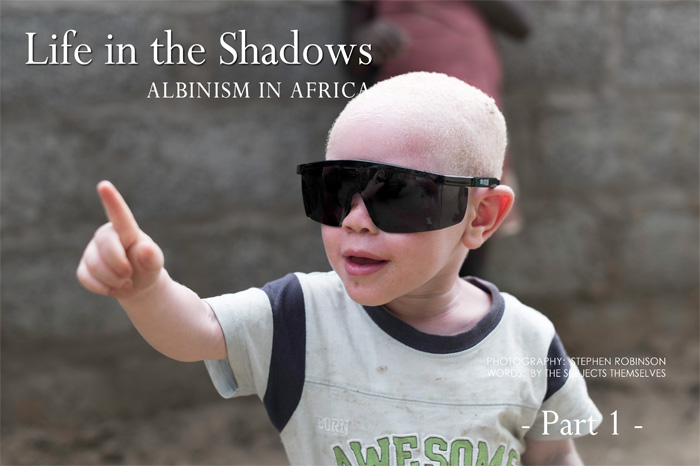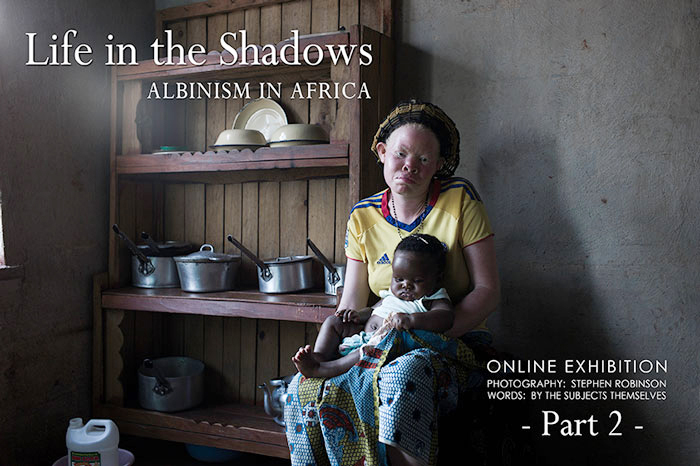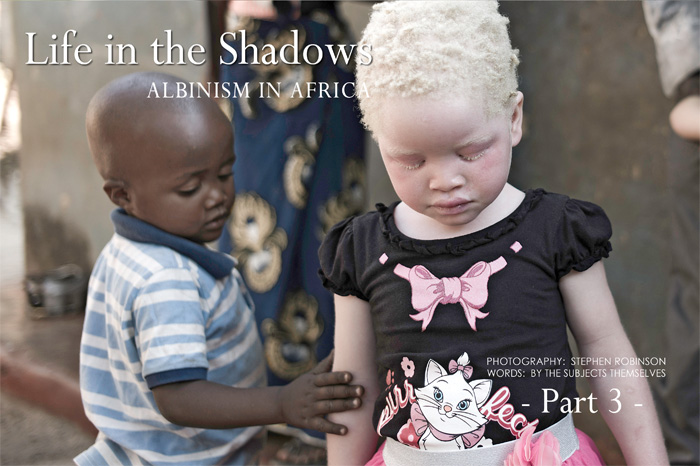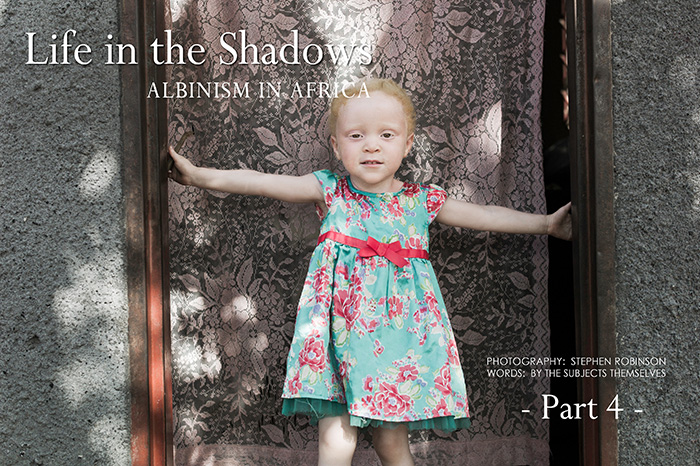Life in the Shadows
ALBINISM IN AFRICA
The modern-day social issue of living with albinism in Africa is, today, probably much as it has been for centuries - an issue steeped in deep-rooted superstition and mythology.
The surprisingly limited media coverage of Africans with albinism is centred on the news-grabbing extremes of their physical abuse, mutilation and even murder. But such coverage makes little mention of the adversities they face every day - including stigma & extreme discrimination, isolation & exclusion, serious health & vision problems, and public ridicule. And all this every day, day-in, day-out.
So this story is about the ordinary: the ordinary daily story of African people with albinism, a story few of us know about.
Accompanying the photographs are the subjects’ own stories of their daily lives, in their own words. |
PART 1 |
PART 2 |
PART 3 |
PART 4 |
What is Albinism?
"Albinism is a rare, non-contagious, genetically inherited condition occurring in both genders regardless of ethnicity, in all countries of the world.
BOTH the father and mother must carry the gene for it to be passed on even if they do not have albinism themselves.
The condition results in a lack of pigmentation in the hair, skin and eyes, causing vulnerability to sun exposure and bright light. Almost all people with albinism are visually impaired, with the majority being classified as 'legally blind'.
While numbers vary, in North America and Europe it is estimated that 1 in every 20,000 people have some form of albinism. In Tanzania, and throughout East Africa, albinism is much more prevalent, with estimates of 1 in 1,400 people being affected.
The term 'person with albinism' is preferred to the term 'albino' as it puts the person before the condition'."
'Under the Same Sun' Organision |





